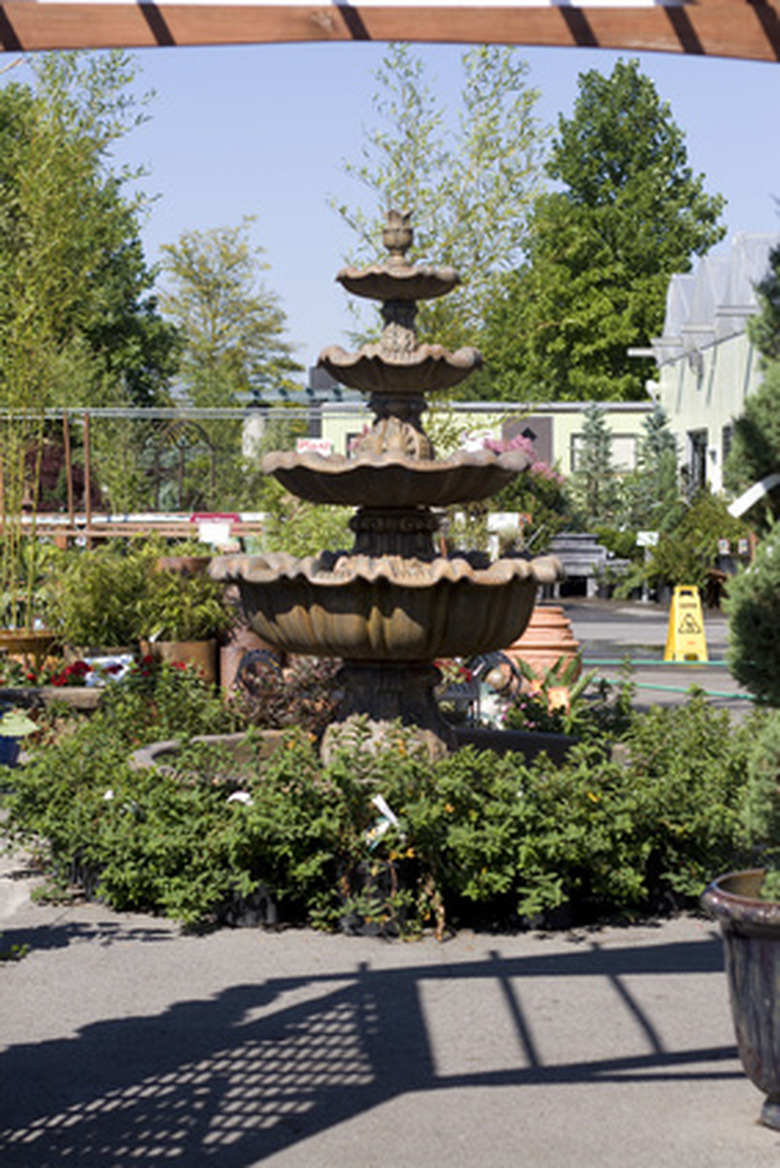How To Protect Outdoor Water Features During A Freeze
Cement will crack when water gets in the crevices because as the water freezes it expands and pushes the crack open wider. Fish can not survive in water that completely freezes or if the top of the pond freezes over but not to the bottom of the pond. The frozen water traps noxious gases and the fish die. Protect your outdoor water features during cold weather. Determine how low the temperature is forecasted and for how long. If the temperature is only going to dip below freezing for a day or two different measures will have to be taken than if it's going to stay well below freezing for weeks.
Cold Winter Areas
Step 1
Drain the fountain, urn or small water feature. Scrub it out with a bleach solution of 1 tsp. bleach to 1 gallon of water. Store in a garage or shed where the temperature doesn't fall below freezing.
- Cement will crack when water gets in the crevices because as the water freezes it expands and pushes the crack open wider.
- The frozen water traps noxious gases and the fish die.
Step 2
Drain a large fountain, urn or water feature that is too large to bring inside. Turn the water feature tub upside so water doesn't collect or cover it with a waterproof tarp if it's too big to turn over.
Step 3
Cover outdoor plumping with insulation and bury it so the water in the pipes don't freeze and burst them.
Step 4
Remove and store the pond pump and the filtration system. Water freezing inside either will expand and rupture the equipment.
Mild Freeze
Step 1
Add a heater to the pond to keep the water from freezing just around the heater. This provides an escape hatch for the gases. Running water doesn't freeze as fast as still water.
- Drain a large fountain, urn or water feature that is too large to bring inside.
- Cover outdoor plumping with insulation and bury it so the water in the pipes don't freeze and burst them.
Step 2
Adjust the pond pump so the tubing comes out of the pond and sprays the water up into a fountain. Or set the tubing on rocks so it runs back into the pond.
Step 3
Add boiling water or very hot water to the pond right before sunset. The water will raise the temperature just enough so it won't freeze if the pond isn't too big and the temperature isn't forceasted to get too low. Pour slowly so the hot water doesn't reach the hibernating fish at the bottom of the pond.
Step 4
Cover the pond with black plastic during the day time so the sun warms the plastic which heats the water. Check the temperature of the water so it doesn't get above 55 degrees and force the fish out of hibernation.
- Adjust the pond pump so the tubing comes out of the pond and sprays the water up into a fountain.
- Check the temperature of the water so it doesn't get above 55 degrees and force the fish out of hibernation.
Tip
Vinyl ponds and fiberglass forms don't have the same problems as concrete they don't crack when frozen.
Warning
Be careful using hot water to warm up a pond. Use the least amount possible.
References
- "All About Building Waterfalls, Pools, and Streams"; Charles M. Thomas and Richard M. Koogle; 2002
